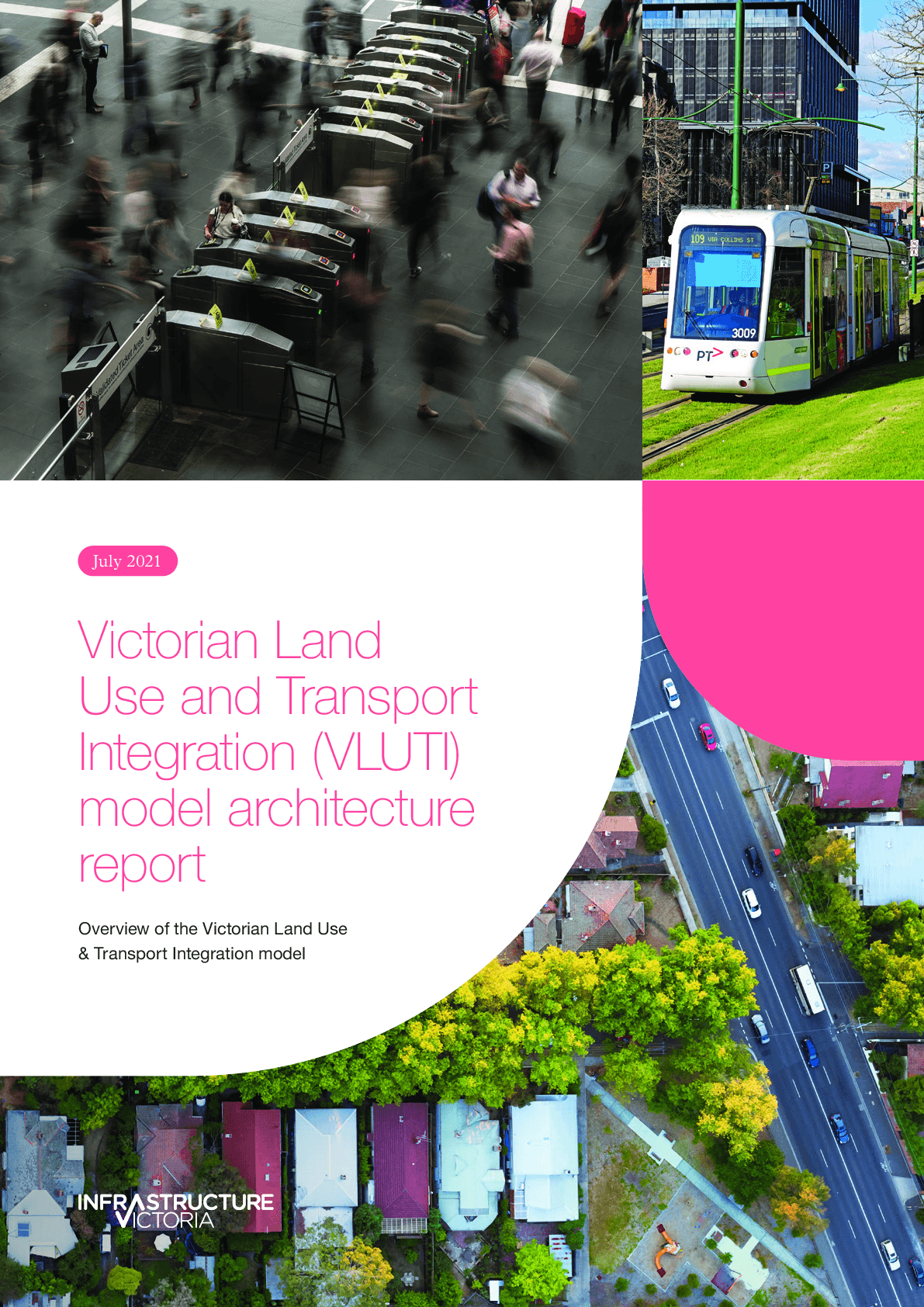Victorian land use and transport integration model architecture report

Overview of the Victorian Land Use and Transport Integration model
In this report, we explain the features and components of the Victorian Land Use and Transport Integration (VLUTI) model.
We use the VLUTI model to estimate the cost and benefit of transport infrastructure. This informs the development of the Victoria's 30-year infrastructure strategy.
The VLUTI model is different from traditional transport modelling. It considers how land use and transport affect each other. This helps estimate the full impact of infrastructure policies and projects.
This report presents:
- the theoretical and technical features of the VLUTI model and its components
- the outputs of the model
- the model's strengths and limitations in supporting transport and infrastructure planning decisions
- how the model has developed
- potential future improvements.
- Infrastructure Victoria developed the VLUTI model with Victoria University and Arup/AECOM.
Key findings
- The VLUTI model helps us understand how policies and investments shape cities.
- The model helps assess how transportation changes affect land use and infrastructure in the long term.
- The model assesses changes in land use, economic impact and how well the transportation system works.
- In traditional modelling, one aspect (land use or transport) remains constant while the other is assessed. Because these two systems interact, it's crucial to consider transport and land use together.
- The VLUTI model integrates two existing models, the SIRCV model and VITM.




